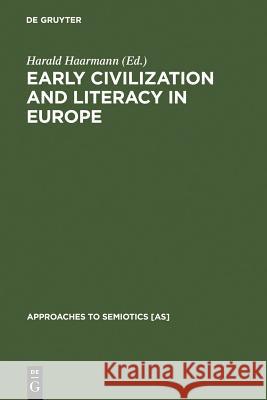Early Civilization and Literacy in Europe » książka
topmenu
Early Civilization and Literacy in Europe
ISBN-13: 9783110146516 / Angielski / Twarda / 1995 / 207 str.
Kategorie BISAC:
Wydawca:
Mouton de Gruyter
Język:
Angielski
ISBN-13:
9783110146516
Rok wydania:
1995
Wydanie:
Reprint 2012
Numer serii:
000162975
Ilość stron:
207
Waga:
0.72 kg
Wymiary:
23.39 x 15.6 x 2.24
Oprawa:
Twarda
Wolumenów:
01
Dodatkowe informacje:
Bibliografia
Wydanie ilustrowane
Wydanie ilustrowane











